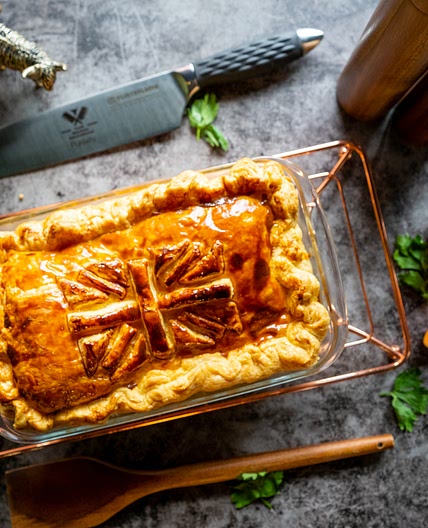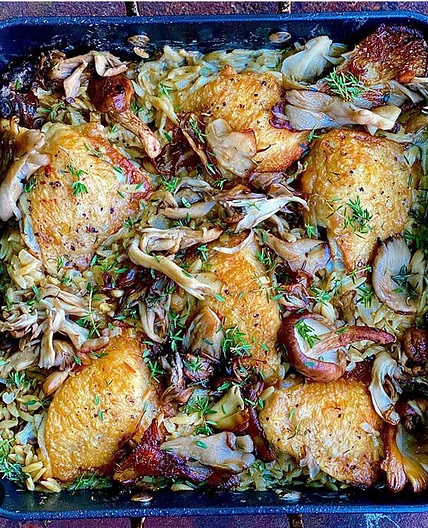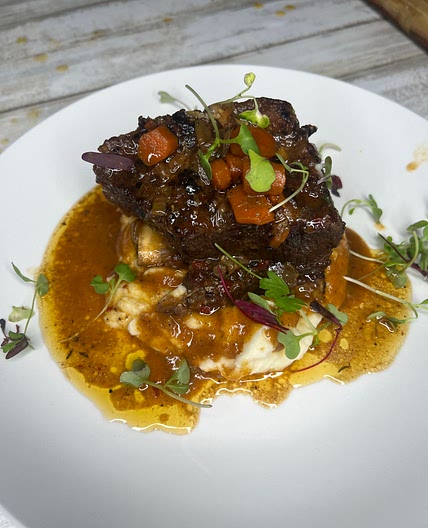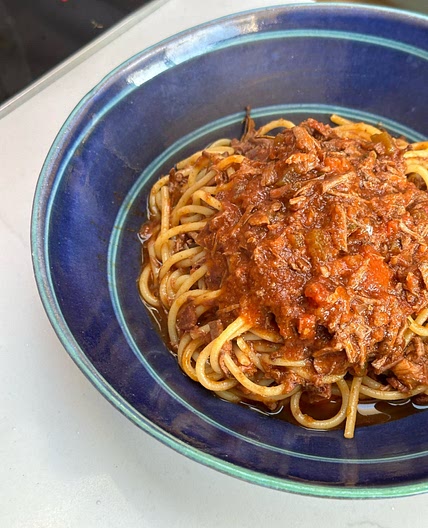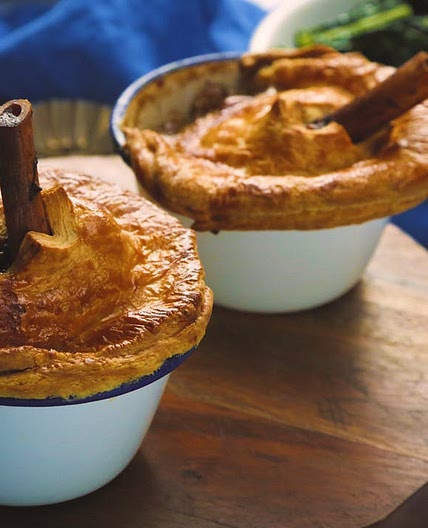Nutrition balance score
Uh-oh! We're unable to calculate nutrition for this recipe because some ingredients aren't recognized.
Ingredients
6 servings
1boneless pork shoulder
500 gramsonions
375 gramsGranny Smith apples
50 gramshoney
Watercress
500gonions
375ggranny smith apples
500mldry cider
250gceleriac
For the sachet
For the potato rosit
Instructions
Make the sachet
Step 1
Lay the cheesecloth on the cutting board and add bay leaf,
cinnamon stick, star anise pods, and cloves on top. Fold the
end and roll into a sachet. Tie both ends with kitchen twine.
Set aside.
For the pork
Step 2
Remove the pork from the refrigerator at least 1 hour
before cooking to allow it to come to room temperature.
Use kitchen twine to hold the pork shoulder in its natural,
plump shape. Wrap twine down the middle lengthwise and
tie, then across the width in the middle and twice more left
of the middle and right of the middle. Season all sides of the
pork with kosher salt.
Preheat oven to 275°F. Heat a large cocotte over mediumhigh
heat. Pour in about ¼ inch of canola oil. Add the pork
and sear, turning as needed, until well-browned on all sides.
Transfer the pork to a rack over a baking sheet, leaving
the rendered pork fat in the cocotte to cook and flavor the
vegetables. Add the onions and salt them, which will draw
out moisture and begin the caramelization process. Once
the onions have caramelized, add the apples and celery
root. Next, add the sachet and cider, reserving some for the
slurry, quickly stepping away to let the steam from the cider
safely escape. Finally, stir in the honey and nestle the pork
shoulder into the bed of vegetables. Cover and cook for
30 seconds. Transfer the cocotte to the middle rack of the
oven to cook for about 4 hours, checking the shoulder after
2½ hours. Use a cake tester to check the resistance. When
there’s little to no resistance, it’s cooked.
Step 3
Remove the cocotte from the oven and bring back to the
stovetop over low heat. Remove the pork and sachet and let
rest on a rack over a sheet pan. Bring the liquid remaining
in the cocotte to a simmer. While it simmers, grind kuzu
in a mortar and pestle. Combine kuzu and cider in a small
bowl and whisk into a slurry, using enough cider that it’s
runny and pourable. Stir in about a third of the slurry and
add more as you continue cooking to reach your desired
thickness. Taste the matignon and adjust salt and acid as
needed. Add the Calvados and do a final taste for seasoning.
Adjust for acidity with vinegar if needed. Simmer until the
flavor is pleasantly concentrated.
For the rosti
Step 4
Peel the potatoes, then slice them lengthwise on a mandolin.
Julienne them lengthwise into to keep the julienne strips as
long as possible. Toss the potatoes with the salt and allow
them to wilt down and release their liquid for about 5 minutes.
Squeeze the potatoes in a lint-free towel to help release any
remaining moisture. You may wish to repeat the squeezing
and salting a couple of times to get the potatoes pretty dry.
Toss the grated potatoes with 2 tablespoons of clarified butter
to evenly coat them. Heat the 8-inch sauté pan over mediumhigh
heat. Add 3 tablespoons of clarified butter to the pan.
When the butter just begins to smoke, start placing the grated
potatoes in the pan. Use a cake spatula to compact the potatoes
tightly into the pan, and flatten them into an even layer that is
about an inch thick. When the rösti begins to brown around the edges, use a cake
spatula to gently separate the edge of the potatoes from the pan
and take a peek at the bottom of the rösti. Adjust the heat up
or down to prevent scorching or sticking to the pan. When the
bottom layer is a rich, golden brown color, use a wide spatula to
carefully and quickly turn the rösti over.
Pour the remaining butter around the perimeter of the rösti and
continue to cook until the other side begins to brown. Reduce
the heat to medium-low and cook slowly for about 10 to 15
minutes, until the bottom is well-browned and crisp.
Remove the pan from the oven or stovetop and loosen the edges
of the rösti from the pan with a cake spatula. Tilt the pan and
coax the rösti out of the pan and onto a serving dish or cutting
board. As soon as the rösti is cool enough to handle, sprinkle
with chives and cut into wedges, using a serrated knife.
Notes
1 liked
0 disliked
There are no notes yet. Be the first to share your experience!

